Texas and Cotton
I
grew up in Kaufman, Texas; and in Kaufman, Texas - I am living still.
Growing up around here as I did with both parents having spent virtually
their entire lives here in Kaufman County, Texas - I've always heard a
lot about cotton, picking cotton, and generally speaking, some of the
wealthiest folks in the community, are named with the surname Cotton.
Everyone around here is well aware of the history of Kaufman County and cotton. There was a time when it was said that Cotton Is King. That time is long past. I'm very saddened by our dwindling cotton culture. The remnants of it are dying or are now gone.
Oh sure, both of my parents can tell you stories of picking cotton in the cotton fields here in their younger years. They'll tell you what hard work it was. On the farm to market road between Kaufman, Texas - on to Forney, Texas - the cotton fields lay in the ruins of mcmansions behind their gates and positioned dubiously across the street from the fields of trailer homes in places with names like Winner's Circle.
Just down the road from the sleepy little town so well known to be completely antagonistic towards business due to the overly corrosive influence of old money on local city politics, lies the town of Crandall, Texas. U.S. Highway 175 is the only lifeblood of Kaufman, and if one wishes to live here they at one time or another have probably made the daily drive 35 miles West down highway 175 to Dallas, Texas - to work. Oh, it's another 35 miles minimum to get back home, of course - it's just what you have to do in a town that once turned down a chance at having a Wal-Mart.
Ten miles out of Kaufman, Texas - headed West towards Dallas on U.S. highway 175 lies the city of Crandall - which is only notable in that
1. It's one of the most horrific speed traps in the history of Texas
2. Mostly rich republicans that believe in creationism live there, and
3. The Cotton Gin Restaurant is the one true redeeming quality or bit of cultural virtue that both serves an outstanding Southern meal, offers drinks, and is altogether a valid, beautiful, and awesome reminder that here in this area our forefather's picked cotton for a living.
The Cotton Gin Restaurant, you see - truly used to be a cotton gin, and inside of it there are implements of cotton ginification and such about. I haven't ate their in a little while, but the place is a fine restaurant with great Southern Cooking, mostly traditional fare, and with the ubiquitous Tex - Mex cuisine also on the menu. If you are in the area, then I definitely recommend The Cotton Gin Restaurant to any or all as a taste of what we Texans, by and large, like to eat.
Everyone around here is well aware of the history of Kaufman County and cotton. There was a time when it was said that Cotton Is King. That time is long past. I'm very saddened by our dwindling cotton culture. The remnants of it are dying or are now gone.
Oh sure, both of my parents can tell you stories of picking cotton in the cotton fields here in their younger years. They'll tell you what hard work it was. On the farm to market road between Kaufman, Texas - on to Forney, Texas - the cotton fields lay in the ruins of mcmansions behind their gates and positioned dubiously across the street from the fields of trailer homes in places with names like Winner's Circle.
Just down the road from the sleepy little town so well known to be completely antagonistic towards business due to the overly corrosive influence of old money on local city politics, lies the town of Crandall, Texas. U.S. Highway 175 is the only lifeblood of Kaufman, and if one wishes to live here they at one time or another have probably made the daily drive 35 miles West down highway 175 to Dallas, Texas - to work. Oh, it's another 35 miles minimum to get back home, of course - it's just what you have to do in a town that once turned down a chance at having a Wal-Mart.
Ten miles out of Kaufman, Texas - headed West towards Dallas on U.S. highway 175 lies the city of Crandall - which is only notable in that
1. It's one of the most horrific speed traps in the history of Texas
2. Mostly rich republicans that believe in creationism live there, and
3. The Cotton Gin Restaurant is the one true redeeming quality or bit of cultural virtue that both serves an outstanding Southern meal, offers drinks, and is altogether a valid, beautiful, and awesome reminder that here in this area our forefather's picked cotton for a living.
The Cotton Gin Restaurant, you see - truly used to be a cotton gin, and inside of it there are implements of cotton ginification and such about. I haven't ate their in a little while, but the place is a fine restaurant with great Southern Cooking, mostly traditional fare, and with the ubiquitous Tex - Mex cuisine also on the menu. If you are in the area, then I definitely recommend The Cotton Gin Restaurant to any or all as a taste of what we Texans, by and large, like to eat.
The Cotton Gin Restaurant - Crandall, Texas
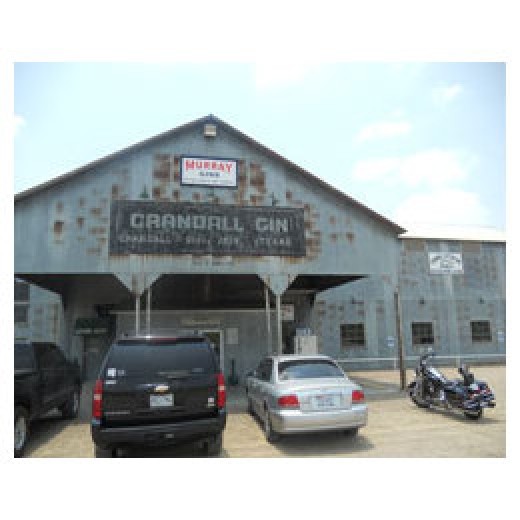
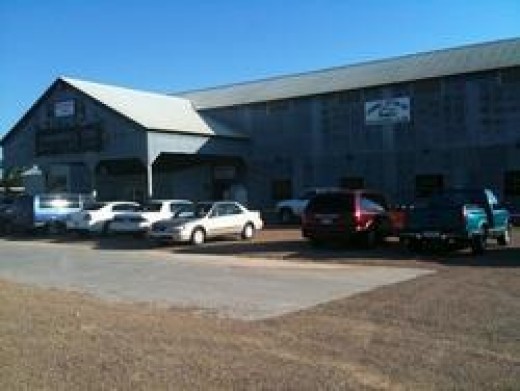
Francisco Coranado.
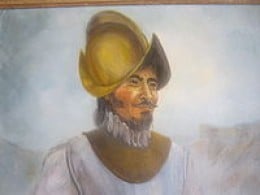
Source
Llano Estacado
But
Kaufman, Crandall, Forney, and even big Dallas - none of these are even
in the Llano Estacado. Growing cotton is not exclusive to the Llano
Estacado, and neither is it exclusive to Texas. So the obvious question
here is:
What is The Llano Estacado?
That's a great question! So glad that you asked!! I shall try to answer if for you and for all forthwith!
Llano Estacado is Spanish for staked plains, or palisade plains - and the region is the North Western parts of the Texas Panhandle and the Eastern parts of New Mexico in the South Western United States. The Llano Estacado is one of the largest mesas or table lands on the North American continent, and it slopes almost ten feet per mile uniformly from it's elevation of around five thousand feet above sea level on the North Eastern end to around three thousand feet above sea level on it's South Eastern end in New Mexico. The Canadian River, rather far from Canada, forms the northern border of the Llano Estacado - it has no natural border on it's Southern end. The area is about two hundred and fifty miles from North to South, and about a hundred and fifty miles from East to West.
The very first European to have crossed this region on record, the Spanish conquistador Francisco Coranado, had the following to say about it.
"I reached some plains so vast, that I did not find their limit anywhere I went, although I travelled over them for more than 300 leagues ... with no more land marks than if we had been swallowed up by the sea ... there was not a stone, nor bit of rising ground, nor a tree, nor a shrub, nor anything to go by."
Francisco Coranado is also to credit for the name of the region. There are some rather interesting bits of fanciful misinformation involved in all of that - but it's named well as the Palisaded Plains. Another huge point of interest for not only Texas, but all of America - is that horses did not live here at all, and hadn't for thousands of years until the Spanish Conquistadors re introduced them to the area. I'm sure people thought that the Native Americans had been riding around on horses over here forever - that's fine to think, but it's just not true.
What is The Llano Estacado?
That's a great question! So glad that you asked!! I shall try to answer if for you and for all forthwith!
Llano Estacado is Spanish for staked plains, or palisade plains - and the region is the North Western parts of the Texas Panhandle and the Eastern parts of New Mexico in the South Western United States. The Llano Estacado is one of the largest mesas or table lands on the North American continent, and it slopes almost ten feet per mile uniformly from it's elevation of around five thousand feet above sea level on the North Eastern end to around three thousand feet above sea level on it's South Eastern end in New Mexico. The Canadian River, rather far from Canada, forms the northern border of the Llano Estacado - it has no natural border on it's Southern end. The area is about two hundred and fifty miles from North to South, and about a hundred and fifty miles from East to West.
The very first European to have crossed this region on record, the Spanish conquistador Francisco Coranado, had the following to say about it.
"I reached some plains so vast, that I did not find their limit anywhere I went, although I travelled over them for more than 300 leagues ... with no more land marks than if we had been swallowed up by the sea ... there was not a stone, nor bit of rising ground, nor a tree, nor a shrub, nor anything to go by."
Francisco Coranado is also to credit for the name of the region. There are some rather interesting bits of fanciful misinformation involved in all of that - but it's named well as the Palisaded Plains. Another huge point of interest for not only Texas, but all of America - is that horses did not live here at all, and hadn't for thousands of years until the Spanish Conquistadors re introduced them to the area. I'm sure people thought that the Native Americans had been riding around on horses over here forever - that's fine to think, but it's just not true.
The Llano Estacado - NOT a Desert!
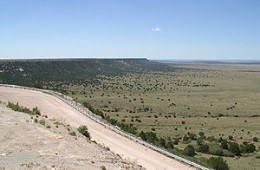
Source
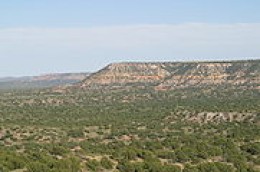
Source
The Commancheria - Comanche First Nation Lands
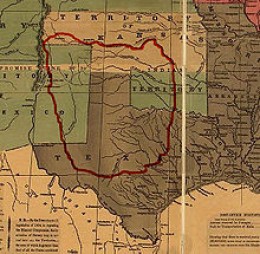
Source
Lubbock, Texas
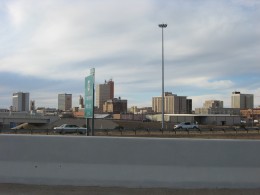
Source
Amarillo, Texas
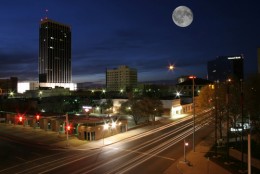
Source
Llano Estacado - Climate and Sparse Population.
The
Llano Estacado lies at the Southern end of the North American Great
Plains, an area formerly referred to as the Great American Desert. I can
pretty much tell you that though the area is arid and very dry - it's
not a desert. I've seen American deserts in South Western parts of
Texas, through New Mexico, Arizona, and Southern California. The Llano
Estacado is North of all of that, and is a grassland. It's not a desert
at all.
The Llano Estacado is one of the largest cotton producing regions in the United States of America. Cotton does not grow in a desert, and if you are in a real desert, you won't see any cotton to be picked - you'll see dirt, more dirt, more dirt still, some rocks, cactus, and the occasional mirage as you pray to the heavens above that you do not run out of gasoline.
There is not, however, hardly much rainfall at all during a year in the Llano Estacado - it's best characterized by long hot Summers with barely a Spring to mention,and some very cold Winters - without much of a Fall either. A mere twenty three inches of rain is the annual average. Don't run out of water in the Llano Estacado!
As previously mentioned here, this region is a very large producer of cotton - and the irrigation of the cotton, obviously, isn't coming from rain fall. It comes from electric motors that pump it out of the ground. Nearly all of Texas has water close to the surface - it's why we don't have basements here.
During the eighteenth century the Llano Estacado was a Native American battleground between the Comanche and the Apache - two of the more war like tribes in all of North America. The Comanche eventually drove the Apache from the Llano Estacado, and the entire area then some became known for a time as the Commancheria - a very bad place for an African American or a European American - or anyone other than a Comanche Indian to be. Later on, In the latter part of the nineteenth century, the Llano was a refuge for the bands of Kiowas Indians as well.
Because of the harsh conditions of the Llano Estacado - the large region is very sparsely populated to this day, and Amarillo and Lubbock are it's two largest cites, both in Texas. I can tell you plain as day that the many times in my life that I've traveled around the United States of America, Mexico, and up into Canada - I've never been able to describe the relief that I get when I cross back home into Texas. It doesn't matter how foreign the Llano Estacado is to someone like me from North Eastern Texas - Just knowing that I'm IN Texas at all brings me huge measures of joy and relief that a Non Texan could probably never understand.
But there is so much more to El Llano Estacado, and as I sit and enjoy producing this, I do it whilst drinking a toast to all of those who've never been here in Texas, or seen the Llano Estacado as I have so many times, and I'm doing it while drinking a glass of Llano Estacado Sweet Red Wine!
The Llano Estacado is one of the largest cotton producing regions in the United States of America. Cotton does not grow in a desert, and if you are in a real desert, you won't see any cotton to be picked - you'll see dirt, more dirt, more dirt still, some rocks, cactus, and the occasional mirage as you pray to the heavens above that you do not run out of gasoline.
There is not, however, hardly much rainfall at all during a year in the Llano Estacado - it's best characterized by long hot Summers with barely a Spring to mention,and some very cold Winters - without much of a Fall either. A mere twenty three inches of rain is the annual average. Don't run out of water in the Llano Estacado!
As previously mentioned here, this region is a very large producer of cotton - and the irrigation of the cotton, obviously, isn't coming from rain fall. It comes from electric motors that pump it out of the ground. Nearly all of Texas has water close to the surface - it's why we don't have basements here.
During the eighteenth century the Llano Estacado was a Native American battleground between the Comanche and the Apache - two of the more war like tribes in all of North America. The Comanche eventually drove the Apache from the Llano Estacado, and the entire area then some became known for a time as the Commancheria - a very bad place for an African American or a European American - or anyone other than a Comanche Indian to be. Later on, In the latter part of the nineteenth century, the Llano was a refuge for the bands of Kiowas Indians as well.
Because of the harsh conditions of the Llano Estacado - the large region is very sparsely populated to this day, and Amarillo and Lubbock are it's two largest cites, both in Texas. I can tell you plain as day that the many times in my life that I've traveled around the United States of America, Mexico, and up into Canada - I've never been able to describe the relief that I get when I cross back home into Texas. It doesn't matter how foreign the Llano Estacado is to someone like me from North Eastern Texas - Just knowing that I'm IN Texas at all brings me huge measures of joy and relief that a Non Texan could probably never understand.
But there is so much more to El Llano Estacado, and as I sit and enjoy producing this, I do it whilst drinking a toast to all of those who've never been here in Texas, or seen the Llano Estacado as I have so many times, and I'm doing it while drinking a glass of Llano Estacado Sweet Red Wine!
0 comments:
Post a Comment